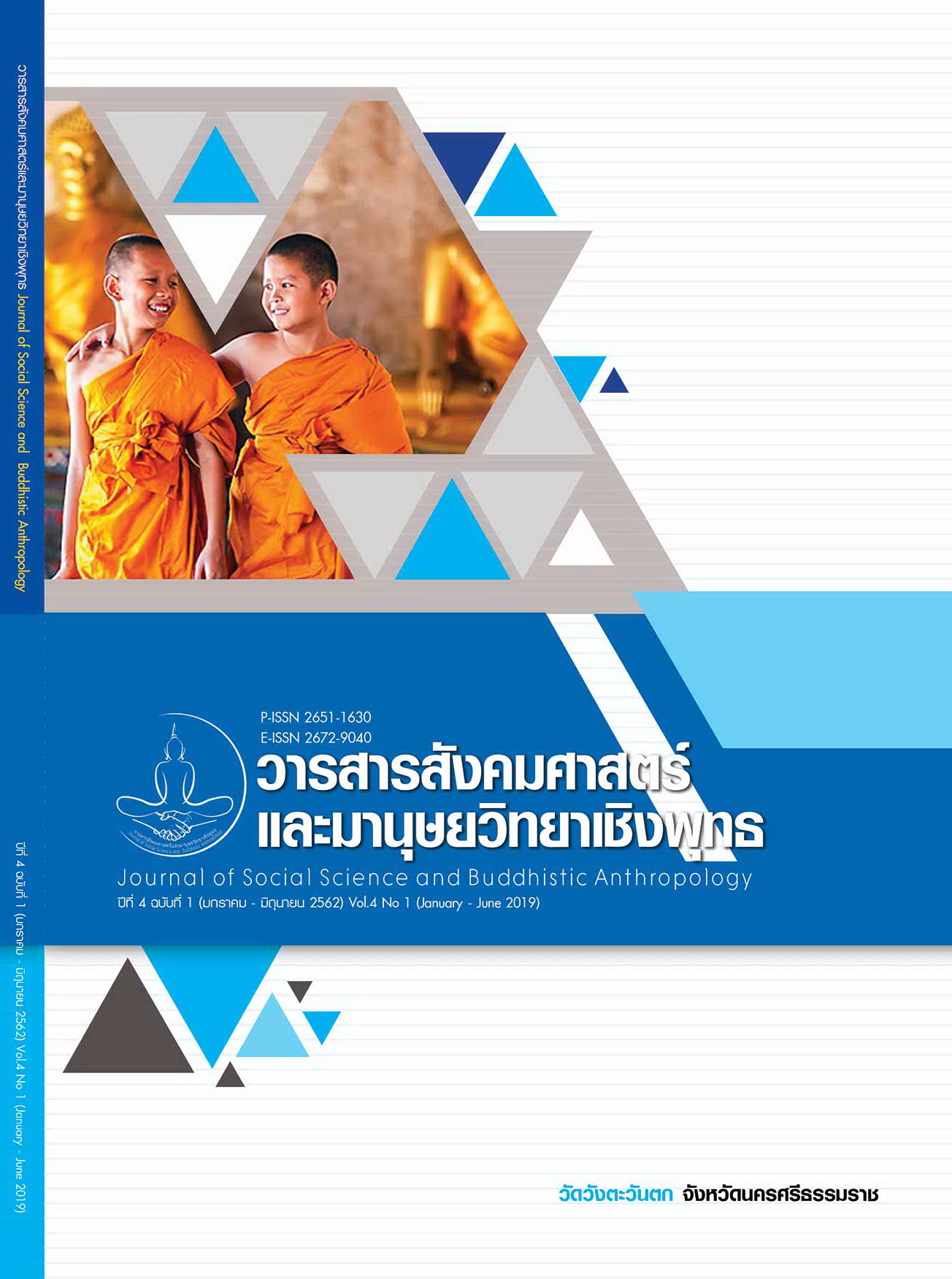AN ANALYTICAL STUDY ON METHOD OF PROPAGATION OF BUDDHISM AS APPEARED IN THE ATTHAKATHA DHAMMAPADA
Keywords:
Method Buddhist, propagation, Buddhism, Atthakatha Dhammapada” scriptureAbstract
This thesis’s objectives are as follows: 1) To study the history and methods of propagating Buddhism. 2) To study the methods of propagating Buddhism in the “Atthakatha Dhammapada” scripture. 3) To study the applied method of propagating Buddhism for the “Atthakatha Dhammapada” in society at present. 4) To study the form and the new knowledge from the Buddhist way of propagating Buddhism in the “Atthakatha Dhammapada” scripture. and unstructured interview form. this research is a qualitative research by studying from the Theravada Buddhist Scripture that is the “Tripitaka”, “Atthakayha”, petition, and other scriptures. Then compiled into descriptive to propose experts for examined and corrected suggested by, using an analytical study process to contribute to the integration and creation of new knowledge.
The study found that:
- Every time when the method propagating Buddhism must consist of 4 methods: 1) “Santasana” 2) “Samatapana” 3) “Samut Tachana” and 4) “Sampahangsana”.
- The method propagating Buddhism in the “Atthakatha Dhammapada” scripture have 3 topics: 1) Teachings on proper behavior, composition of body and practices for public faith. 2) Teachings about refrain “Sangyotch” that found only 8 items from the 10. That is “Sakka Kaysthiti”, “Wijikitcha”, “Siluppata Pramas”, “Kama Chanta”, “Patika” and 3) Teachings about negligence.
- The method application of propagating Buddhism in the “Atthakatha Dhammapada” scripture with society at present has 4 topics: 1) Teachings about the law of Karma.2) Teachings are consistent with the heart of Buddhism. 3) Teachings about personal conduct, activities that should act. And 4) Teachings about interaction with others. “Mana”, “Autthaja” and “Avitcha". That does not appear “Roop Rakha” and “A-Roop Rakha”.
- New forms and knowledge from the methods of propagating Buddhism in the “Atthakatha Dhammapada” scripture which is “Phutcha-Visaschana” and the use of media to catch up with the world.
References
ฌานิศ วงศ์สุวรรณ. (2556). การศึกษาเรื่องพุทธวจนะในธรรมบทของเสฐียรพงษ์ วรรณปก. ใน วิทยานิพนธ์อักษรศาสตรมหาบัณฑิต สาขาวิชาประวัติศาสตร์. มหาวิทยาลัยศิลปากร.
พระครูโอภาสธรรมพิทักษ์ (เสียม เงางาม). (2554). ศึกษาหลักและวิธีการเผยแผ่ธรรมของพระธรรมโมลี (ทองอยู่ ญาณวิสุทฺโธ). ใน วิทยานิพนธ์พุทธศาสตรมหาบัณฑิต สาขาพระพุทธศาสนา. มหาวิทยาลัยมหาจุฬาลงกรณราชวิทยาลัย.
พระเทพดิลก (ระแบบ ฐิตญาโณ). (2552). ประวัติพระพุทธศาสนา. (พิมพ์ครั้งที่ 6). กรุงเทพมหานคร: มหามกุฎราชวิทยาลัย.
พระมหาสำเนียง ปสาโท. (2555). “ไขความอรรถกถาธรรมบท” ในดำรงวิชาการรวมบทความทางวิชาการคณะโบราณคดี. กรุงเทพมหานคร: มหาวิทยาลัยศิลปากร.
พระศรีพัชโรดม (ลักษณะ กิตฺติ ญาโณ). (2560). รูปแบบการเผยแผ่พระพุทธศาสนาของพระสงฆ์ใน สังคมไทย. ใน พุทธศาสตรมหาบัณฑิต สาขาวิชาพระพุทธศาสนา. มหาวิทยาลัยมหาจุฬาลงกรณราชวิทยาลัย.
มหาจุฬาลงกรณราชวิทยาลัย. (2539). พระไตรปิฎกภาษาไทย ฉบับมหาจุฬาลงกรณราชวิทยาลัย. กรุงเทพมหานคร: โรงพิมพ์มหาจุฬาลงกรณราชวิทยาลัย.
มหามกุฎราชวิทยาลัย. (2553). พระธัมมปทัฏฐกถาแปล ภาค 1. (พิมพ์ครั้งที่ 21). กรุงเทพมหานคร: มหามกุฎราชวิทยาลัย.
ศักดิ์ศรี แย้มนัดดา. (2543). วรรณคดีพุทธศาสนาพากย์ไทย. กรุงเทพมหานคร: โรงพิมพ์แห่งจุฬาลงกรณ์มหาวิทยาลัย.
สุชีพ ปุญญานุภาพ. (2553). พระไตรปิฎกฉบับสำหรับประชาชน. (พิมพ์ครั้งที่ 16). กรุงเทพมหานคร: มหามกุฎราชวิทยาลัย.
อาบรามส์ เอ็มเอช. (2552). อธิบายศัพท์วรรณคดี. กรุงเทพมหานคร: กระทรวงศึกษาธิการ.








